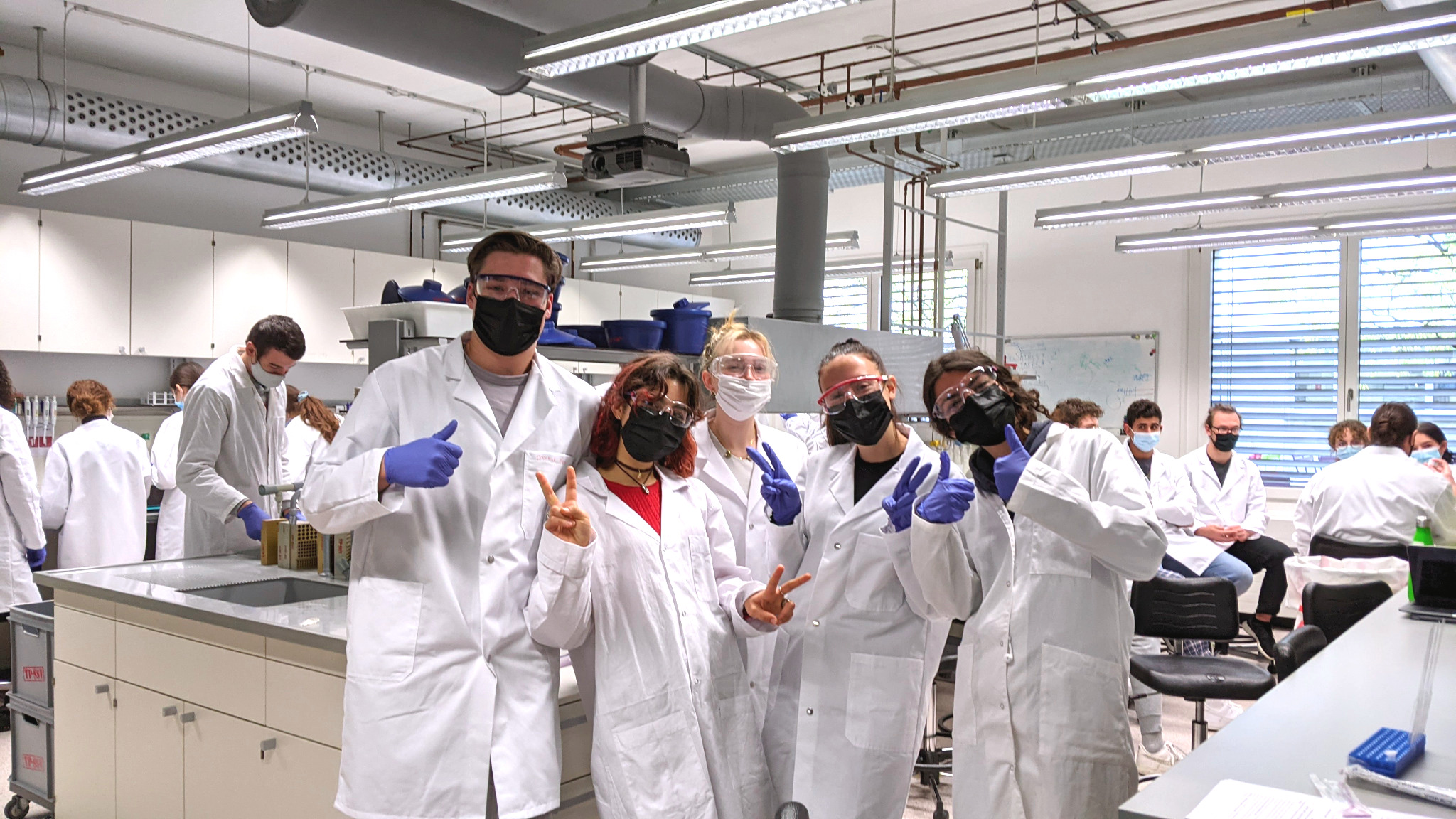
University Teaching
As a PhD student at EPFL, I had the privilege —not just the duty— of serving as a Teaching Assistant (TA). One of the things I truly appreciated about the life sciences program was the opportunity to choose the courses we wanted to TA, aligning our teaching responsibilities with our interests and expertise.
Synthetic Biology in the Spring of 2021
In my second semester, I joined a new course on synthetic biology as a TA. My responsibilities included creating answer sheets, teaching exercise sessions, supervising the exam, and managing logistics such as lecture recordings and exam grading. However, the spring semester of 2021 brought unique challenges, as it was conducted entirely online due to the pandemic.
We hosted the exercise sessions on Discord, adapting to the demands of remote learning. Elective online sessions at 8 a.m. were, admittedly, challenging for everyone involved, but the experience gave me a newfound appreciation for the value of face-to-face interaction in teaching. While virtual platforms kept us connected, they couldn't replace the energy and connection of being in the same room as my students.
Molecular Biology Lab: Building a Teaching Relationship
In the following semester, I arranged to TA a molecular biology lab course. This course had a distinctive structure: as a TA, I was assigned two groups of six students each, whom I worked with on alternating weeks throughout the academic year. This continuity allowed us to build a strong and natural teaching relationship, which led to great results at the final exam.
I set clear expectations for my students: come to class prepared and stay focused during the session. In return, I made every effort to teach them effectively, prepare thoroughly for each session, and provideconstructive feedback on their assignments. I also strove to make the class environment realistic and accommodating. For example, while the lab sessions were officially four hours long, I assured them that if they worked efficiently and were on track to finish early, they could enjoy a short break—sometimes to grab hot chocolate from the campus Christmas market.
In addition to fostering a supportive learning environment, I actively sought and welcomed constructive criticism from my students. Their feedback allowed me to adapt my teaching methods, ensuring the sessions remained engaging, effective, and aligned with their needs. This mutual exchange of expectations and feedback created a collaborative atmosphere that encouraged learning and personal growth for both my students and me
Teaching Through Hands-On Challenges
Learning lab protocols can be daunting. Even when students have mastered the theory, handling lab equipment requires practice. To make the process engaging, I organized spontaneous friendly competitions, like seeing who could open and close Eppendorf tubes the fastest. These light-hearted challenges helped break the ice and encouraged students to hone their skills with enthusiasm.
A Personalized Approach
As I got to know my students, I discovered their individual interests and career goals, which allowed me to tailor my teaching approach to their needs. This personalization wasn’t just effective; it was deeply rewarding. By the end of the course, I wasn’t just teaching techniques or theories—I was working with people, understanding their aspirations, and helping them grow.
Long-Lasting Connections
Even though several years have passed since I TA'ed this class, I still keep in touch with many of my former students. A few of them even attended my PhD defense, which was a deeply touching reminder of the connections we built during those semesters. These ongoing relationships are a testament to the meaningful impact of mutual respect, collaboration, and shared learning.
Post a comment